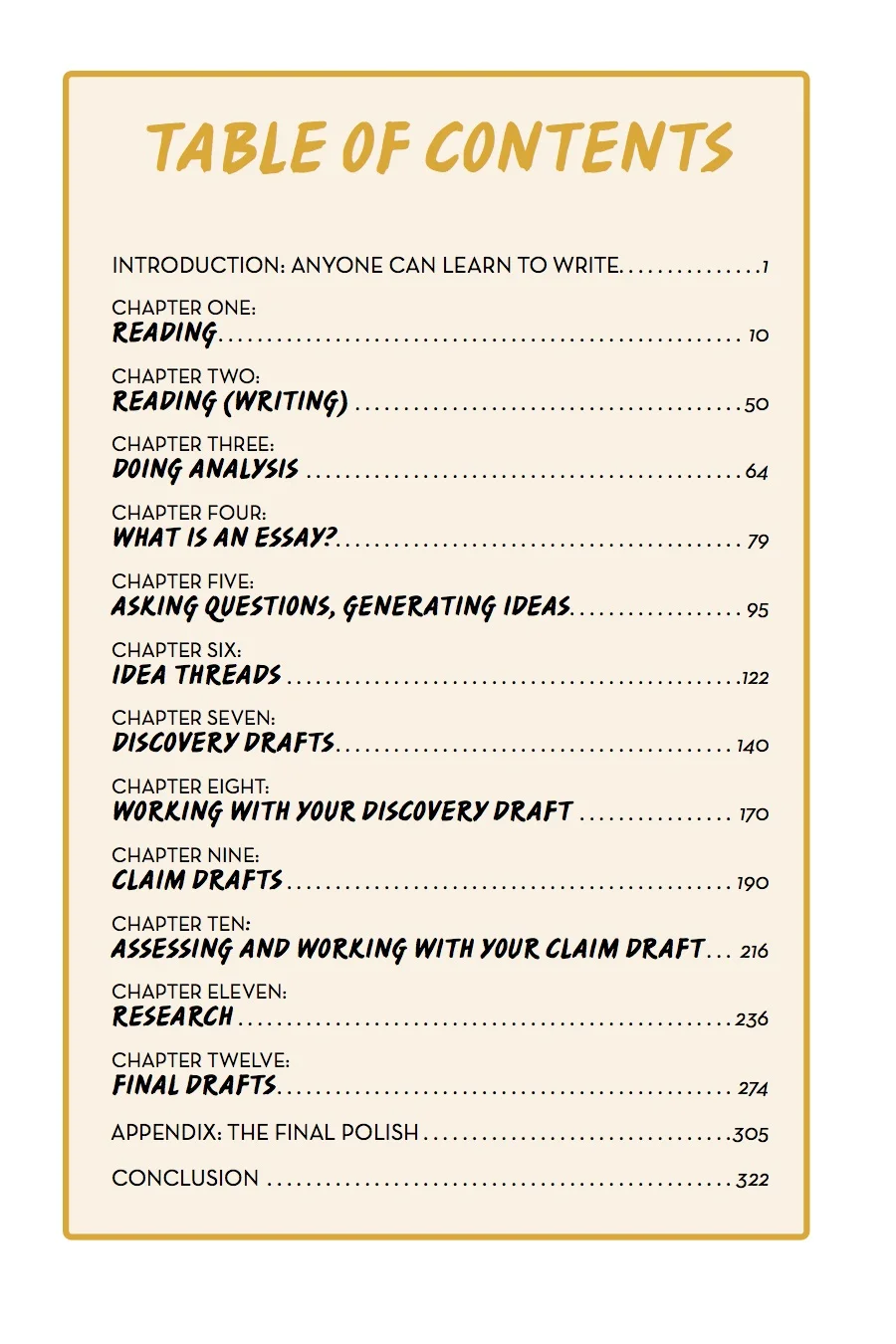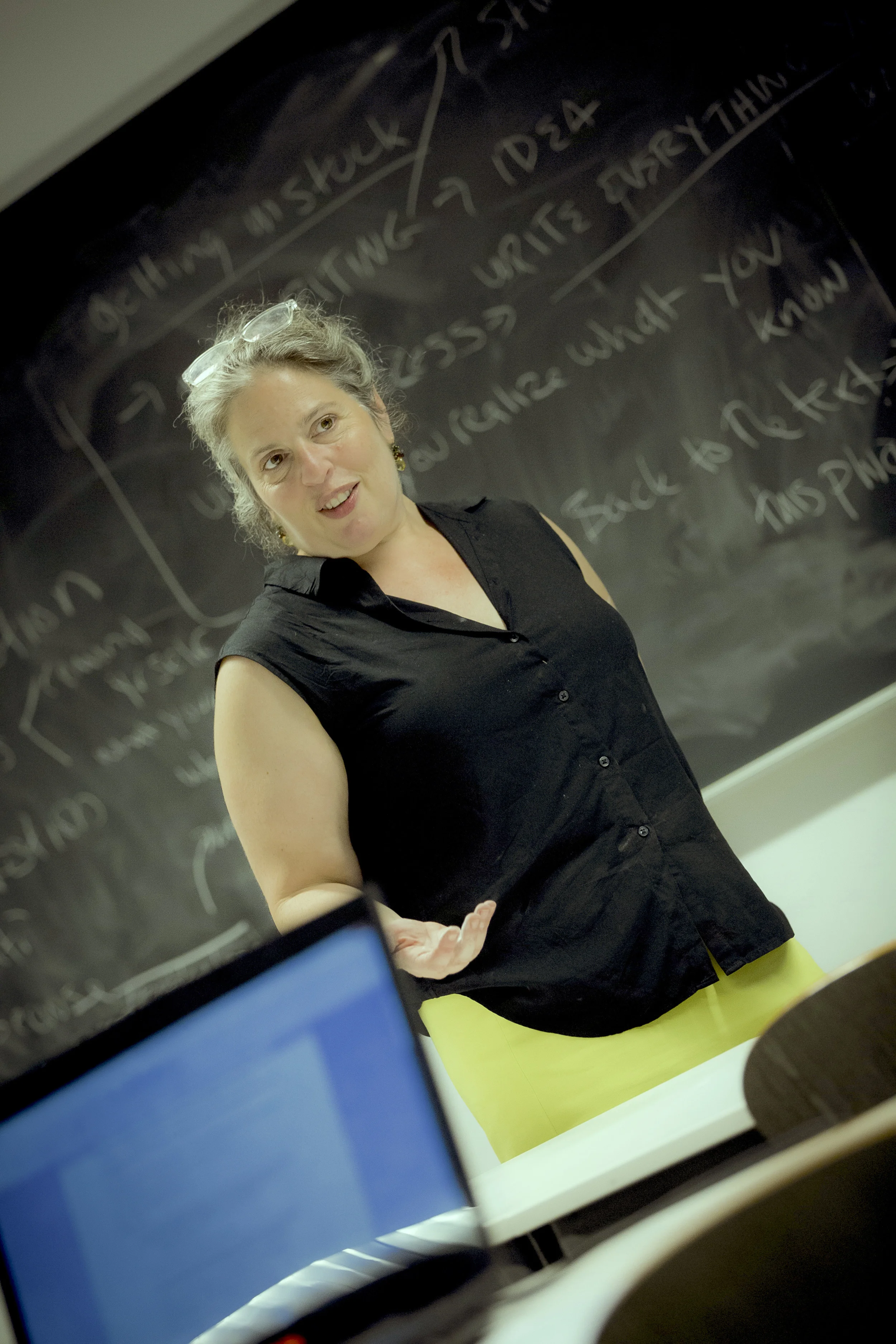Information for Teachers and Professors
What Makes Thinking on the Page Different?
Thinking on the Page is different from the average writing guide or workbook. As every writing instructor knows, most students arrive at college thinking that they're bad writers: they find writing intimidating, they don't "get" analytical writing or close reading, they struggle to move beyond summary. Instead of asking them to think like English majors, Thinking on the Page gives these students approaches and techniques that make sense to them--without talking down to them.
Thinking on the Page offers real examples of close reading and analysis, using the kinds of rich, challenging texts (poetry, fiction and prose) you already use in your classes. Instead of asking students to answer content questions or perform limited exercises, Thinking on the Page offers useful techniques that are immediately applicable to almost any text or phenomenon a student might explore in a college classroom. And instead of just talking about these techniques in the abstract, we put theory into practice, using drawings, charts, flow charts, and other visual representations that make sense to all types of students.
How It Works
Thinking on the Page is a step-by-step guide, designed to take students all the way through the writing process. Each chapter takes up a piece of the progression; the chapters are grouped to reflect the major stages of essay construction. Our strategies for essay-building help students avoid the "begin at the beginning and write till you run out of things to say" trap. Our checklists and methods are easily used in workshops, in-class practice, independent work at home and peer review.
The first four chapters ("Reading," "Reading (Writing)," "Doing Analysis," "What is an Essay?") form a unit on the fundamental writing and reading tasks that underly essay writing.
Our chapters on "Asking Questions, Generating Ideas" and "Idea Threads" helps students see that question-asking is a key technique in making discoveries and doing analysis. These chapters give students methods for delineating and sharpening questions, grouping different types of ideas, and returning to the text for further exploration. The techniques we offer can be practiced in class or at home, independently or with a peer.
The chapters on drafting and revision help students understand how essay structure works, why it matters, and how to build it. These chapters offer a range of strategies for effective drafting, self-assessment and revision. We pay particular attention to the challenges of developing and testing evidence-based claims and conclusions--at the essay level, the section level and the paragraph level.
In the final chapters, we show students how to delineate questions for useful research and how to make meaningful use of research materials, and we address final edits, helping students to think about the essay as a polished, persuasive narrative.
Using Thinking on the Page in Your Classes
Thinking on the Page works well with almost any course: as a supplemental text for writing pedagogy in existing curricula, or as a primary text, for a course utilizing essays, poetry and fiction excerpted in the book. Our checklists and methods are easily put into practice in workshops, in-class writing, independent work at home or peer review.
Roy Groething/The Cooper Union
As a supplemental text: Thinking on the Page can be used as an ancillary text for any writing-intensive class. In a class primarily focused on content, you might opt to assign chapters as extra reading, supplementing your in-class discussions; in a class more focused on writing, you can use our book to shape class discussion and in-class exercises. Every section includes clear explanations of key concepts (in words and images), methods for putting those concepts to work, examples, and suggestions for practice and troubleshooting. The "Pitfalls and Problems" sections can be used by students to review their work on their own, or they may form the basis for in-class workshops or clinics.
As a primary text: Thinking on the Page offers a coherent narrative of essay-building for writing intensive courses, and it's loaded with excerpts from engaging and challenging literary and non-literary works. Our list of primary texts includes Mary Shelley's Frankenstein, ee cummings' "next to of course god america i," Virginia Woolf's essay "Professions for Women," John Milton's Paradise Lost, Bram Stoker's Dracula, Atul Gawande's essay "The Checklist," John Berger's Ways of Seeing, and Martin Luther King's "I Have a Dream" speech.
Thinking on the Page includes:
- A step-by-step progression that works effectively for first-year writing courses and writing-intensive classes at all levels
- A flexible approach to every stage of critical reading and analytical writing
- Hands-on methods and approaches that make sense to all students--especially to those who don’t think like English majors
- Accessible and engaging examples, explanations, and illustrations that demystify key components of the essay-writing process
- A task-based approach to research

